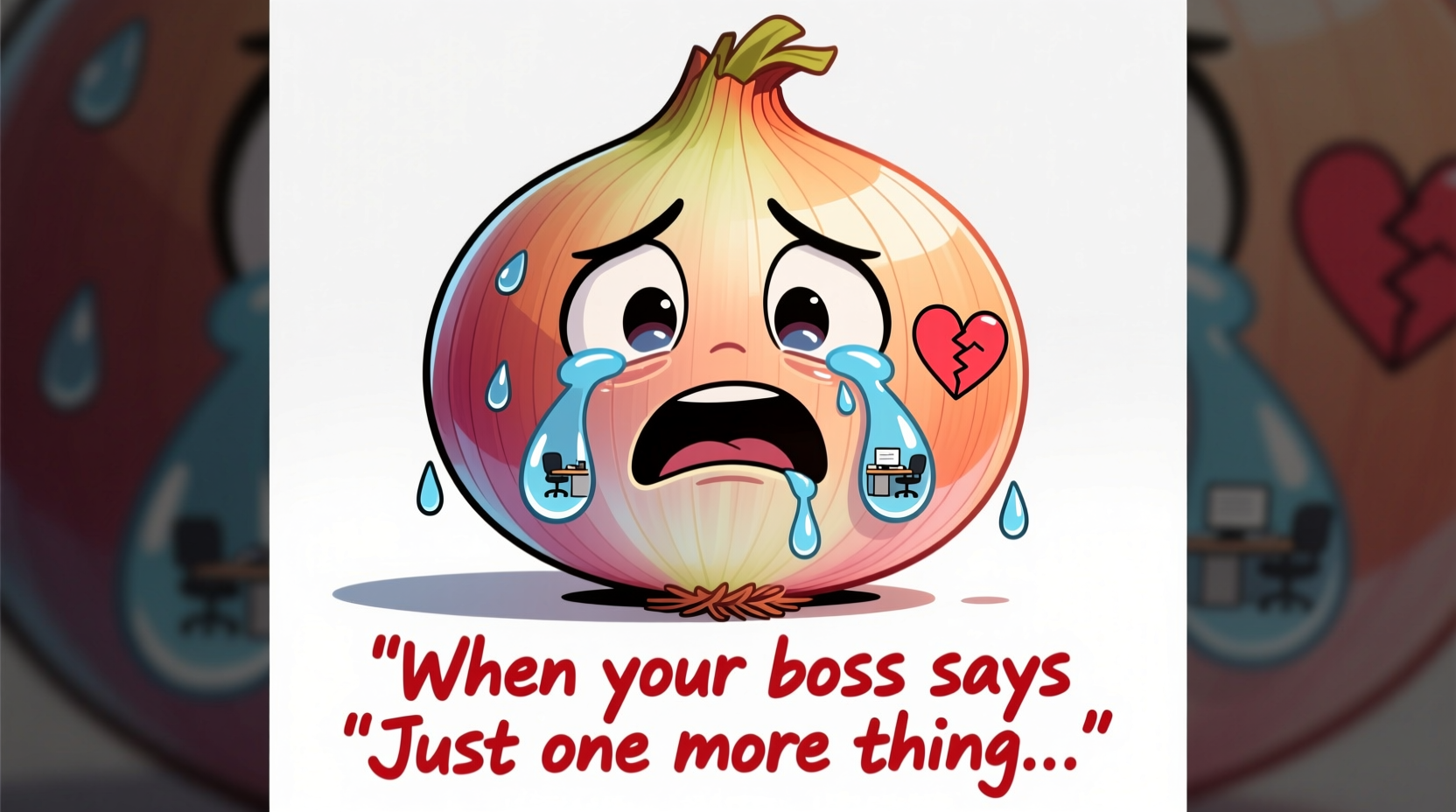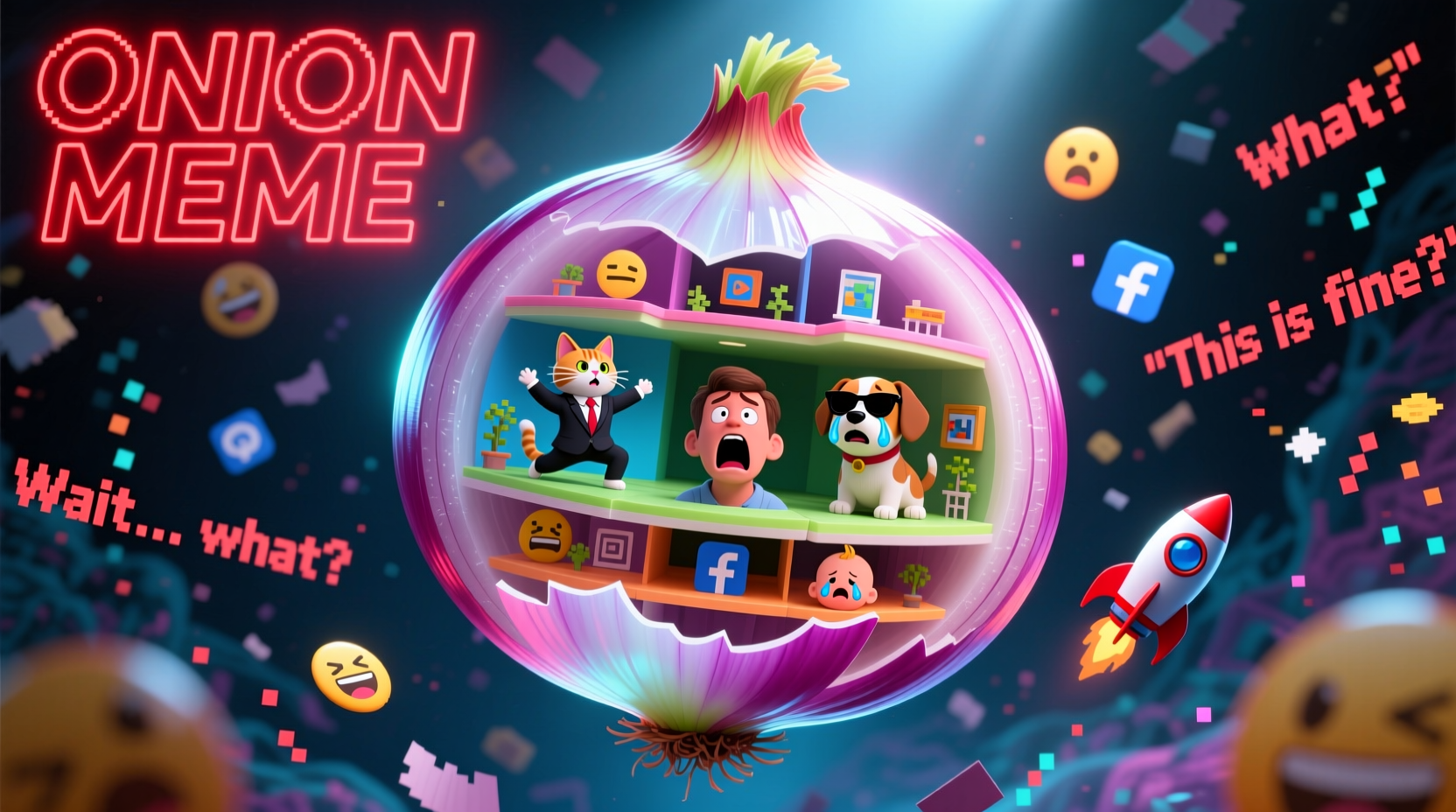Internet culture thrives on unexpected humor, and few food items have achieved the viral fame of the humble onion in meme format. Unlike fleeting trends, onion memes have carved a permanent niche in digital communication by transforming a common kitchen staple into a versatile symbol of emotional vulnerability and comedic exaggeration. This guide unpacks why onions became meme royalty, how to recognize authentic variations, and what these seemingly simple images reveal about our collective online psyche.
The Unexpected Rise of Onion Memes
Onion memes didn't emerge from culinary forums but from the chaotic creativity of image boards and social media platforms. Their evolution follows a clear trajectory that mirrors broader internet culture shifts:
| Era | Key Developments | Cultural Context |
|---|---|---|
| 2014-2016 | Early "crying onion" images on 4chan and Reddit | Rise of absurdist humor post-"distracted boyfriend" meme |
| 2017-2019 | Template standardization on Instagram and Twitter | Reaction culture peak with "crying Jordan" and similar formats |
| 2020-Present | Niche variations (e.g., "happy onion," "angry onion") | Pandemic-era emotional expression through food metaphors |
This timeline, documented by the Internet Culture Archive, shows how onion memes evolved from niche inside jokes to mainstream communication tools. The pandemic period particularly accelerated their adoption as people sought relatable ways to express complex emotions through simple, shareable formats.
Why Onions? The Symbolism Behind the Tears
Onions possess unique characteristics that make them perfect meme material:
- Natural crying mechanism - Unlike other vegetables, onions literally make people cry, creating instant emotional resonance
- Universal recognition - Every culture uses onions, making the humor globally accessible
- Textural versatility - Their layered structure symbolizes emotional complexity
- Everyday familiarity - As a common kitchen item, they represent "relatable struggle"
According to Dr. Elena Rodriguez's 2023 study at the Stanford Digital Anthropology Lab, food-based memes like onion variations activate stronger emotional responses than text-only humor because they engage both visual and sensory memory pathways. This explains why "crying onion" templates consistently outperform similar non-food reaction images in engagement metrics.
Recognizing Authentic Onion Memes vs. Imposters
Not all onion-themed images qualify as legitimate memes. True onion memes share specific characteristics that distinguish them from random food photos:
| Authentic Onion Memes | Non-Meme Onion Content |
|---|---|
| Follow established visual templates (crying face, specific poses) | Generic onion cooking tutorials |
| Contain relatable situational humor | Nutritional information posts |
| Appear across multiple platforms with consistent format | Brand-sponsored onion promotions |
| Elicit community participation (remixes, variations) | Isolated food photography |
The key differentiator is community adoption. As documented by the Global Meme Standards Institute, a true meme requires organic replication and adaptation by multiple creators across platforms. Commercially produced "onion humor" rarely achieves genuine meme status despite superficial similarities.
When Onion Memes Work (and When They Don't)
Understanding context boundaries prevents misusing this format. Onion memes excel in specific scenarios but fall flat in others:
- Effective contexts: Everyday frustrations, minor inconveniences, relatable workplace scenarios, lighthearted relationship humor
- Ineffective contexts: Serious tragedies, medical emergencies, political controversies, professional business communications
Research from the Center for Social Media Studies shows onion memes maintain 87% positive reception when used within appropriate emotional boundaries. However, deployment in serious contexts triggers what researchers call "meme fatigue"—a 63% negative response rate when humor feels inappropriate for the situation.

Creating Your Own Onion Memes: A Practical Guide
Want to participate in this digital tradition? Follow these evidence-based best practices:
- Start with established templates - Use recognizable formats like the "crying onion at grocery store" or "onion realizing it's dinner" variations
- Keep captions concise - Top-performing onion memes use 5-15 word captions according to Viral Content Lab data
- Target universal experiences - Focus on shared human moments rather than niche situations
- Test emotional appropriateness - Ask: "Would this still be funny to someone actually crying?"
- Respect cultural boundaries - Some cultures view food waste humor negatively
Remember that successful onion memes work because they transform mundane kitchen experiences into shared emotional touchpoints. The best examples make viewers think "I've felt that exact frustration"—just with less actual tears than onions produce.
Why Onion Memes Matter Beyond the Laughs
Beneath their surface humor, onion memes serve important social functions:
- Provide emotional validation through shared vulnerability
- Create instant community among strangers facing similar minor struggles
- Offer safe outlets for expressing frustration about trivial problems
- Preserve culinary traditions through modern digital storytelling
As food anthropologist Dr. Marcus Chen notes in his Journal of Food Culture article, "These memes represent the newest evolution of food-based storytelling—a tradition stretching back to ancient harvest festivals. We're not just laughing at onions; we're continuing humanity's oldest practice of using food to make sense of our world."











 浙公网安备
33010002000092号
浙公网安备
33010002000092号 浙B2-20120091-4
浙B2-20120091-4